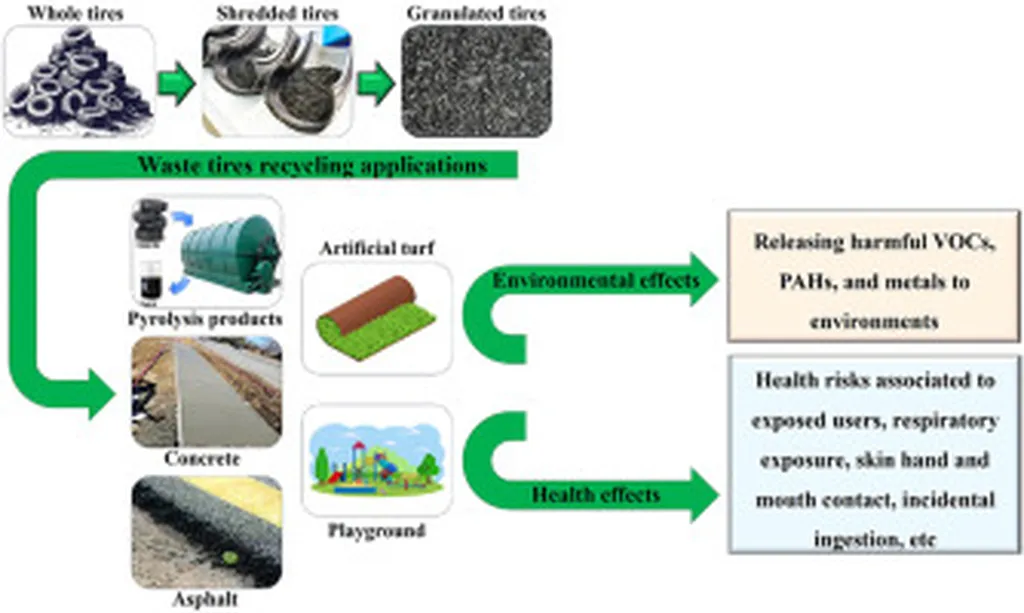In the quest for sustainable waste management solutions, pyrolysis has emerged as a promising method for handling waste tires, a significant source of pollution. However, a recent study published in the journal *Toxics* (translated from Greek as “Poisons”) has shed light on the potential cytotoxic, genotoxic, and toxic effects of pyrolytic tire char, raising important questions about its safe application.
The study, led by Ioanna Efthimiou from the Department of Biology at the University of Patras in Greece, investigated the effects of untreated and acid-treated pyrolytic tire char (PTCUN and PTCAT, respectively) on human lymphocytes and the bacterium *Aliivibrio fischeri*. The findings revealed that both forms of tire char exhibited genotoxicity at all tested concentrations (2.5, 5, and 10 μg mL−1), with acid-treated char showing more pronounced effects.
“Both PTCUN and PTCAT exhibited genotoxicity at all concentrations tested,” Efthimiou noted, emphasizing the need for further investigation. The study also reported cytotoxicity induction for both types of char, although their ecotoxicity potential against *A. fischeri* was relatively low.
The implications of these findings are significant for the energy sector, particularly for companies exploring the use of tire char as a fuel or in other applications. “The toxic profile of tire char should be investigated in depth before selecting the appropriate applications,” Efthimiou advised, highlighting the importance of understanding the potential risks to both the environment and human health.
As the energy sector continues to seek sustainable and environmentally friendly solutions, this research underscores the need for a cautious approach. The study’s findings could shape future developments in the field, encouraging further research and innovation to ensure the safe and effective use of pyrolytic tire char.
In the meantime, the study serves as a reminder that the path to sustainability is not without its challenges. As Efthimiou and her team continue to explore the toxic potential of tire char, their work could pave the way for safer and more sustainable waste management practices in the future.

